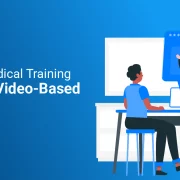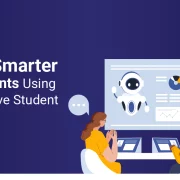
How to Leverage Visual Content in Higher Education
Even before we formally begin to read and write, we consume a massive amount of information through the visual medium – images and experiences of childhood remain in our memories for times to come. Elders reading out from beautifully illustrated fairy tales to their children is an experience most of us can relate to and no matter how old we grow, the memory never fails to evoke a sense of nostalgia. So great is the impact of these visually pleasing interactive books and so beautiful are the associated memories that most people don’t have the heart to discard them even when they grow up, preferring to store them for the next generation. And while there may be various aspects to this beautiful childhood experience, one of the most dominating is the never-failing impact of the visual content.
Cut to the present, the explosion of the social media, brimming with selfies, group photos and videos of people traveling to exotic locales, performing adventurous activities or honing their skills, and DIY videos motivate the readers to also take the plunge. One common thread between the experiences of childhood or the current digital realities of our lives is the fact that visual storytelling is the most effective way to get across a message to a target audience, motivate people towards a specific task or achieve specific learning outcomes. Visual content increases interest and motivates learning. Higher education institutions are now leveraging interactive visual content to improve the efficacy of their curriculum, ensure greater connection with the courses, achieve higher learning outcomes, and capture the attention of students, teachers, and parents.
To further build the case for visual content in higher education, research classifies learners as auditory sequential learners and visual-spatial learners. Auditory sequential learners are known to learn through linear organization, words, and order; visual-spatial learners, on the other hand, perform better with picture-based thinking and the possibilities they evoke. So, while a lot of learning takes place through text, the human brain processes visual content quickly and effectively – it takes around 0.5 seconds to process visuals and for the words, the time taken is approximately 6 seconds. Visual content is, therefore, necessary for higher education. Take a look at how visual content can be leveraged in higher education.
Builds analytical skills
In a study conducted in 2017, 64 students were first shown a set of images to develop their analytical skills. After this, an analytical test was given to the experimental and control group. Results showed that the students in the experimental group performed much better than those in the control group who had not been shown the images.
Improves attention
Research is testimony to the fact that the human brain processes images faster than text and also retains interactive visual content better than any other form of content. Several eye-tracking studies conducted in the digital context show that the image-rich section of a website receives the maximum attention while the text section receives just about 20% of the attention.
Improves engagement
Interactive visual content is highly engaging. To illustrate this with an example, abstract mathematical concepts are sometimes difficult to explain to the students. They will find it difficult to visualize and put them into context. However, visual content can give these concepts concrete shape and bring them alive for the learner, thus, increasing their engagement with the lesson.
Increase retention
The human brain absorbs images better than text, a fact supported by a study published by Changing Minds conducted on students. The study showed that they could recall only 25% of the information after a spoken lecture; however, the recall sky-rocketed to an impressive 80% when the lecture was associated with illustrated images. It is a common fact that all classes have students with mixed abilities with high, low and average learners. Supporting lectures with visual content helps to level the field and ensure that students with all abilities engage and benefit from the teaching.
Makes learning accessible
Taking the above argument further, visual content also helps to reach students with learning disabilities and impairments. Video content, in particular, is seen to be highly useful in engaging students with ADHD.
Acts as a teaching aid
Visual content is a great teaching aid for educators as they can use it to convey their thoughts and thus, make lessons more effective. Visual content provides appropriate representation of historical, scientific, and qualitative data.
Make teaching more effortless
Teachers need to put in less effort in teaching concepts when they support them with visual content. Besides, they don’t have to spend time creating their own teaching aids since they can find a wide range of free visual content on the Internet to support their teaching. Freed from time-consuming tasks, they can spend more time on teaching and also make visual content supported lessons more effective.In conclusion As seen from the above discussion, visual content has a greater impact on the learners. Visual content, such as videos, games, infographics, and PowerPoint presentations is highly engaging and is a great means to attract and hold reader attention. Numerous studies are testimony to the fact that the brain processes visual content faster than text, leading to greater engagement, assimilation and retention. Higher education institutions can leverage visual content to achieve higher learning outcomes. It enables great storytelling, allowing for greater interest in the subject under study.
Institutions can also outsource visual eLearning content development to a specialized vendor to create custom lessons that engage the learners and make learning more effective.
Need to know more about our Products & Services ? Drop us a Note.
We respect your privacy. We use the information you provide us to send you relevant content about industry trends and our products & services. You may unsubscribe from our list at any time. For more information, check out our Privacy Policy



